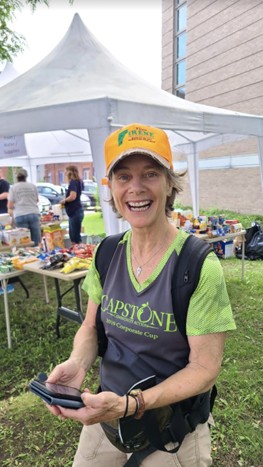Sue Minter:
Founding member of Montpelier Alive

Through this interview, we celebrate one of Montpelier Alive’s founding members and influential organizational leaders while getting a glimpse into the very beginnings of Montpelier Alive. Sue Minter was one of the founders of the organization, coming onboard as a part time consultant in planning during the initial stages of the downtown program in 1996.
Sue Minter originally moved to Vermont for a fellowship with the Conservation Law Foundation after graduating from MIT with a Master’s degree in Urban Planning. She loves Montpelier deeply and enjoys community organizing which has also allowed her to meet a lot of great people!
Her interest in creating cohesion between cultural organizations for coordination and collaboration, as this wasn’t done before, is one of the things that drew her to this work. She also found inspiration in the Main Street program after attending conferences and brought this inspiration into the development of Montpelier Alive - using the Main Street plan for the creation of three committees: design, marketing, and administration/development.
During a large community summit, the community unveiled ideas for all the different aspects of the Main Street plan - which is what started Montpelier Alive. This plan then became a prelude to the official designation of Montpelier’s downtown, which was one of the biggest achievements during Sue’s time with Montpelier Alive. She attributes the success of the plan to the local community really caring and helping to create a thoroughly comprehensive and engagement-focused plan.
Sue and the team began formalizing the committee structure and received money for logo creation and branding. Montpelier Alive began its revitalization efforts by placing benches in gathering spaces and engaging with the local business community, which was a new and important concept. July 3rd was started during her time in an effort to circumvent times of ebb and flow of community events. Another highlight is that during her time, the City committed to becoming financially involved.
Sue lists some more notable achievements during her time with Montpelier Alive: advancement of the bike path enrichment and growth for the arts community, plans for some of the parking and transportation center challenges finally took off, co-branded marketing events, and implementing the community’s vision.
In Sue’s mind, Montpelier Alive is necessary for the community as it’s an organization that understands the community on multiple levels. An organization like Montpelier Alive creates demonstrable improvements in the community that don’t happen unless there’s an organization to make them happen. Some of the ways in which the organization works is through keeping the local businesses vital, sustaining downtown’s historic qualities while enhancing them and growing the local economy. In essence, Montpelier Alive does the people’s work - it’s outside of government, but also supported by and understood by the government.
Some final thoughts that Sue shared are, “In these difficult times, it is one of the many things that gives hope - to see a community so dedicated to “community” as a whole. Montpelier Alive fulfills the aspirations of the community and I have optimism that it will continue to grow and fill the gaps that government can’t fill, but the community can.”